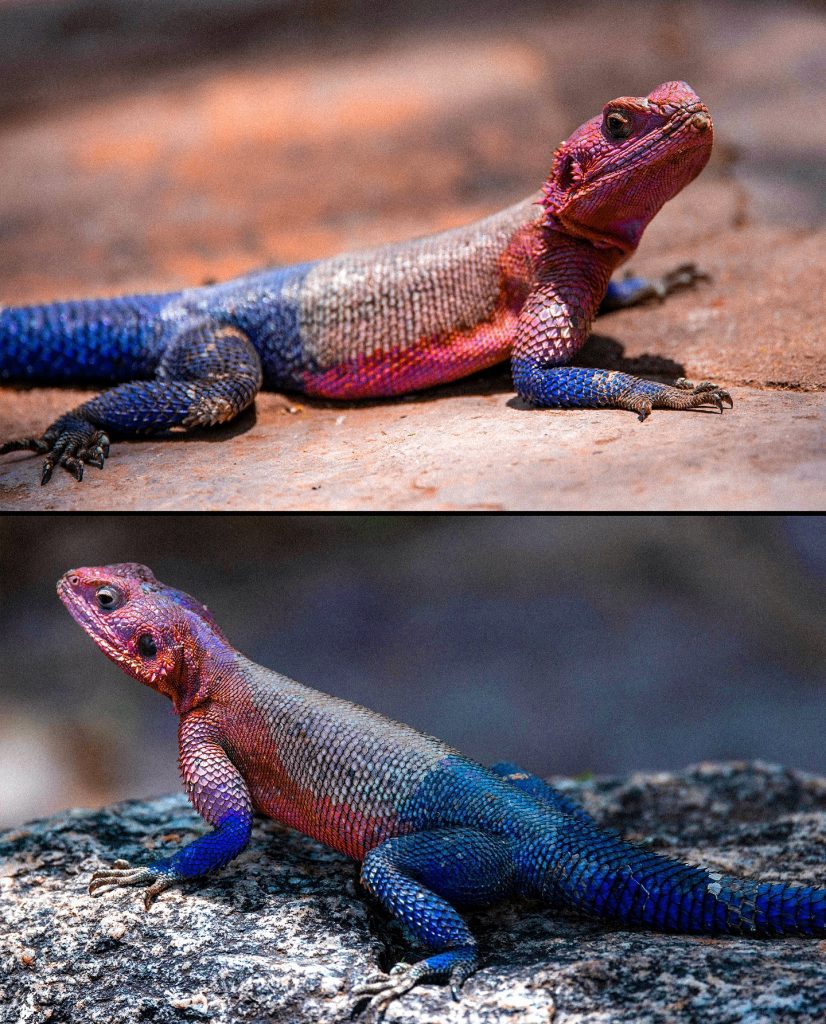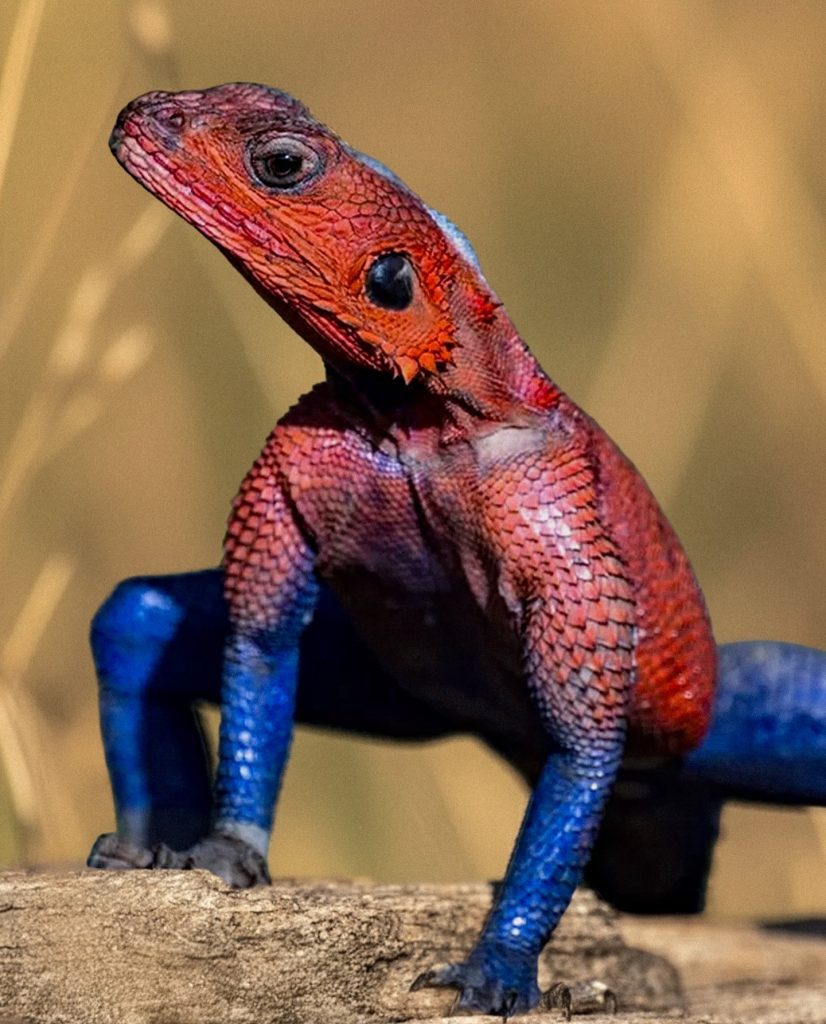Meet the Vibrant “Spider-Man Lizard” from East Africa — A Real-Life Creature That Looks Like It Swung Out of a Marvel Film
If you’ve ever thought nature couldn’t possibly outdo the imagination of comic books, the Spider-Man lizard will make you think again. Officially known as the Mwanza flat-headed rock agama, this extraordinary reptile looks like it stepped straight out of the Marvel universe — complete with Spider-Man’s signature red-and-blue colors. Found across the sun-soaked rocks of East Africa, particularly in Tanzania, Kenya, and Rwanda, this dazzling lizard is living proof that nature is the ultimate artist.

During the day, the males transform into radiant living artworks. Their heads and shoulders blaze with a vivid crimson hue, while their bodies glow in deep shades of royal blue, creating a perfect resemblance to the superhero suit worn by Peter Parker himself. When the sun hits them just right, the colors shimmer and flash, making these lizards hard to miss even in a landscape of sun-bleached stones. It’s this uncanny resemblance that earned them the nickname “Spider-Man lizard,” and ever since photos of them went viral online, they’ve become a symbol of how breathtaking and unexpected wildlife can be.

But their beauty isn’t just for show — it’s a matter of dominance and attraction. The more vibrant the male, the higher his status among his kind. During the day, these colorful males perch proudly on rocks, basking in the sun while keeping watch over their territories and mates. They move quickly and assertively, bobbing their heads and doing push-up displays to ward off rivals or impress females. Their bright colors tell the world that they are strong, healthy, and confident — a message every bit as bold as their appearance.
What makes this lizard even more fascinating is its ability to change color. At night, or when it feels threatened, the male’s brilliant hues fade into dull browns and grays, helping it blend into its rocky surroundings. This quick costume change is nature’s version of Spider-Man’s stealth mode — a survival trick that protects them from predators and helps them conserve energy. When danger passes or morning returns, the colors return with the light, glowing once again like living jewels against the earth.

Despite their superhero looks, the Mwanza rock agamas are small — adults grow to about a foot long, including the tail. They’re agile, darting effortlessly between rocks, chasing insects, and basking under the African sun. They live in colonies, often led by a dominant male who typically keeps a small group of females — sometimes as many as five. He defends his rocky kingdom fiercely, ensuring that rivals know who rules the sunniest spot in the territory.
Interestingly, while their striking colors may have once evolved purely for communication and mating, humans have found them captivating for another reason: their resemblance to one of pop culture’s greatest icons. Wildlife photographers and tourists now seek them out, often calling them “real-life Spider-Men,” a title they wear effortlessly. Yet, despite the fame, these lizards remain humble residents of the African wilderness, content with their simple lives among rocks and sunbeams.
Their popularity online has also shed light on the incredible biodiversity of East Africa. Many visitors who come to the region in search of lions, elephants, or flamingos are now discovering that some of the most remarkable creatures are the ones just a few inches long. For scientists and conservationists, this attention is a small victory — proof that even the tiniest animals can inspire wonder and respect when people take the time to look closely.
The Mwanza flat-headed rock agama may never swing between skyscrapers or battle villains, but it embodies the same boldness and beauty that made Spider-Man a hero. It’s a reminder that nature often writes its own comic book — one of vibrant colors, quiet survival, and endless surprises. The next time you see a photo of this extraordinary lizard, remember: not all heroes wear masks. Some simply bask in the sun, painted in red and blue, living proof that life imitates art in the most astonishing ways.

